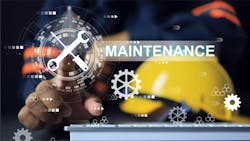6 steps to build a strong reliability culture at your plant
Engineers, maintenance managers, and plant managers are all looking for transformative best practices, tools, or equipment design improvements that will elevate their equipment reliability and cost performance to world class. The reality we all eventually face is that there is nothing we can buy off the shelf to shortcut the journey toward reliability excellence. If there was, everyone would have it.
Equipment reliability only comes from a change in how we think and act; in a word – Culture. A misguided path taken by many practitioners is to simply implement every tool employed by others deemed best in class. Example: Plant A has a CMMS, a full-time reliability engineer, OEE teams, a Tuesday planning meeting, separate planned and unplanned work crews, oil sampling and vibration analysis on all critical assets, 20 KPIs that are tracked, one planner for every 20 craftsmen and one supervisor for every 10 craftsmen. All we need to do is mirror what Plant A is doing and we will get Plant A results. What can go wrong?
It is all about waste
If you only remember one thing from this article, let it be this: Reliability is a relentless pursuit of waste elimination. Every reliability best practice targets inefficiency. Why do we plan work? Answer: to ensure prioritized work is executed safely, downtime is minimized, precision work is performed, work performed is efficient, and the equipment returns to service on time making quality product.
What do all these have in common? You got it, waste. The challenge of the change agent is to know the specific wastes in your plant and apply the right tool to reduce or eliminate it. Eventually you may deploy each tool, but sequence matters a lot. Establishing organizational momentum (quick wins), positive business results and maintaining long-term sponsorship are critical to every change effort. Countless reliability change efforts have died because a lack of tangible business results produce a lack of confidence by management. In my plants, results needed to be seen in 90 days or less.
Imagine you are the coach of a basketball team. From game film and statistics review, you determine you are losing games in the fourth quarter due to player exhaustion and poor free-throw percentages. Now a consultant compels you to implement best practices of great basketball teams beginning with passing, turnovers, and shooting 3-pointers. Your team will garner more wins faster by focusing on conditioning and foul line performance.
What characterizes a reliable plant?
I have worked in 41 different locations across the globe – some as a practitioner, three as a plant manager, and many as a consultant. Every plant is on a reliability journey. Those that are accelerating forward with sustainable results I have found have a few things in common. Here are six:
- A culture of “Go and See:” KPIs point you where to look for wastes, but they are not a substitute for using intense observation to know reality. Observation is required to fully understand current state and reveals simple and rapidly implemented solutions—most often at zero cost.
- A problem-solving culture: Everyone at the plant knows how to surface problems and how changes get implemented. It is a formal, trained, and documented process. Examples: Overall equipment effectiveness (OEE) teams assigned to critical assets; a dedicated reliability engineer.
- A culture of accountability: All employees know their jobs, and there are consequences to doing it well and poorly. Examples: performance expectations with numerical targets and by-when dates; a morning meeting where the results of yesterday are detailed along with help needed for today and tomorrow to meet expectations. Management spends a significant amount of time connecting the dots of daily actions to long term results. Sustained poor performance is addressed by management.
- A culture of learning: Failure is accepted as an accelerated learning tool. A training system exists to ensure precision maintenance is known and is being executed. Risk aversion is discouraged because it is the major obstacle for culture change. New technologies are tested and implemented.
- A culture of execution: A process exists for getting work identified, approved, and executed. Obstacles are anticipated and counter measured by supervisors and planners. Despite obstacles, we get the job done.
- A partnership culture exists between maintenance, engineering, and production: While I vehemently advocate that reliability is owned by operations, everyone has a critical role to play in producing a winning team. Blaming of others is rare.
What is missing?
What about a CMMS, an organizational mission statement, ratios of crafts to planners/supervisors, or a world-class lube program? In my experience, all tools are secondary. It’s a trap; tools and processes are what you see when you go to a plant but not what makes the plant reliable. Decisions and behaviors are below the waterline of the reliability culture glacier.
If you have seen the movie Money Ball, you witnessed the team manager (Billy Beane) transform the Oakland A’s from mediocrity to a contender by shifting focus from what has been traditionally valued by owners and scouts (“great players possessed powerful hitting, exceptional defense and could steal bases), to what really mattered to winning (getting on base). The A’s competed with the New York Yankees on one-third of their budget. This philosophy was quickly adopted by all major league teams.
What really matters with reliability and maintenance? Eliminating waste.
What can you do on Monday (for free)?
- Add “go and see” time to your calendar. Target four continuous hours on a critical problem or asset in your plant each week. Caution: do not be tempted to give up after two hours. Expect to be shocked with the wastes you see and the simple solutions you discover. (cost to implement: FREE)
- Require all process changes, capital purchases, and business decisions to be supported by at least 16 hours of observation. (cost to implement: FREE)
- Document your problem-solving system. Train all employees. (cost to implement: FREE)
- Get sponsorship to begin a morning meeting. I call these “YTT” meetings – yesterday, today tomorrow. (cost to implement: FREE)
- Challenge your leadership team with this question: “Is it okay to try a change and fail in our culture?” If not, brainstorm how you can change. (cost to implement: FREE)
- Change the performance expectations of planners and supervisors to include anticipation and countermeasure wrench time, precision, and timeline wastes. (cost to implement: FREE)
- Transfer ownership of reliability to your production leader for he or she owns the assets. Maintenance and engineering are professional advisors on maintaining and improving equipment health and are also responsible for efficient execution and precision of work. (cost to implement: FREE)
Remember, culture changes one experience at a time. What experience are you creating today?
About the Author
Joe Kuhn
CMRP
Joe Kuhn, CMRP, former plant manager, engineer, and global reliability consultant, is now president of Lean Driven Reliability LLC. He is the author of the book “Zero to Hero: How to Jumpstart Your Reliability Journey Given Today’s Business Challenges” and the creator of the Joe Kuhn YouTube Channel, which offers content on creating a reliability culture as well as financial independence to help you retire early. Contact Joe Kuhn at [email protected].

